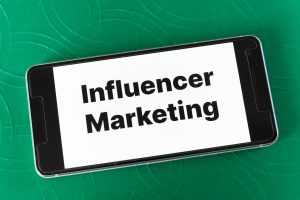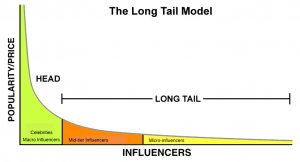
You’ve likely been inundated with how significant influencers are in boosting brands’ online marketing efforts. You want influencers to work with you. Your brand wants in on that high-profile influencer mojo. We get it. We like working with influencers and definitely see the benefits. But, much like gamblers in Vegas, not everyone hits the jackpot – or even wins big. Not everything goes viral. Not all influencer campaigns actually drive sales.
We don’t want to extinguish your enthusiasm about influencers – just help temper your expectations. There is a lot of hype surrounding influencer marketing and we’re here to help you sort through the facts and the fiction.
What You Read and Hear About Influencer Marketing
- For every $1 that brands spend on influencers, brands are getting an ROI of $5.78.
- Sponsored blog posts alone have proven to yield up to 11x more ROI than standard banner ads.
- 90% of marketers believe influencer marketing to be an effective form of marketing.
What We Hear Directly From Influencers
“We already have paid partnerships lined up for the next month and we are unable to accept product-only partnerships at this time.”
“There is a lot of work that goes into creating content, so our preference is to have a flat fee to cover the time it takes to create quality content.”
“I’d love to work together but I do charge a marketing fee for my content, copy, and time. I would need them to have a significant marketing budget ($3,000 to $5,000) to work with me.”
Understanding the Influencer Landscape
There are different thresholds and different names used when categorizing the size of influencers, but here’s a general rule of thumb:
Nano influencers (1K-10K followers) – They typically have a very engaged social media following and great engagement rates. Nano influencers can be vocal advocates of the brands and products they love. Their followers appreciate their authentic recommendations and commentary. They have a very close relationship with their followers and take the time to engage with their followers to cultivate those relationships. Best For: Small- to mid-size businesses with a limited marketing budget. They are a cost-effective option for getting started with influencer marketing and testing a new product or expanding into a new niche.
Micro-influencers (10K-100K followers) –This level is viewed as relatable to their followers and tends to have an engaged audience. At this level, influencers tend to specialize in a particular niche. They also typically have high engagement rates and a targeted audience. Best For: More focused leads. While they have the same close relationship with their followers as nano influencers, micro-influencers are more specialized so their audience is primed to hear marketing messages within that niche.
Macro influencers (100K-1M followers) – These influencers lean toward a broader audience and are typically internet-made celebrities. They are likely social media stars, bloggers, vloggers, or podcasters. They’ve often developed their audience over months or years of nurturing relationships. Because of their larger following they often have relatively low engagement rates. Best For: To bring brand awareness of products and services. They may help with increasing a brand’s engagement rates, reach, and reputation.
Mega or celebrity influencers (1M+ followers) – Mega influencers and celebrities have huge and very broad audiences. Best For: A brand awareness campaign. If a brand has a large budget, mega influencers can get products in front of as many eyes as possible.
Understanding the Costs
| Influencer | Followers | Instagram per Post | YouTube per Video | TikTok per Post | FaceBook per Post | Twitter per Post |
| Nano Influencer | 1K-10K | $10-$100 | $20-$200 | $5-$25 | $25-$250 | $2-$20 |
| Micro Influencer | 10K-100K | $100-$500 | $200-$1K | $25-$125 | $250-$1.25K | $20-$100 |
| Macro Influencer | 500K-1M | $5K-$10K | $10K-$20K | $1.25K-$2.5K | $12,5K0-$25K | $1K-$2K |
| Mega Influencer | 1M+ | $10K+ | $20K+ | $2,5K+ | $25K+ | $2,000+ |
Source: Influencer Marketing Hub
Essentially, there are three roles influencers play:
- Introducers: Those who introduce a brand or product into a consumers’ mind space.
- Contributors: Those who contribute and ensure that the brand or product remains top-of-mind as they contemplate their purchase decision.
- Closers: Those who close the deal and are the final point of persuasion that drives the purchase decision through.
Bigger Isn’t Always Better

Source: CrowdMedia
Check out Affiliate Marketing: Under the Influence (Part 2)
Check out Affiliate Marketing: Under the Influencer (Part 3)
